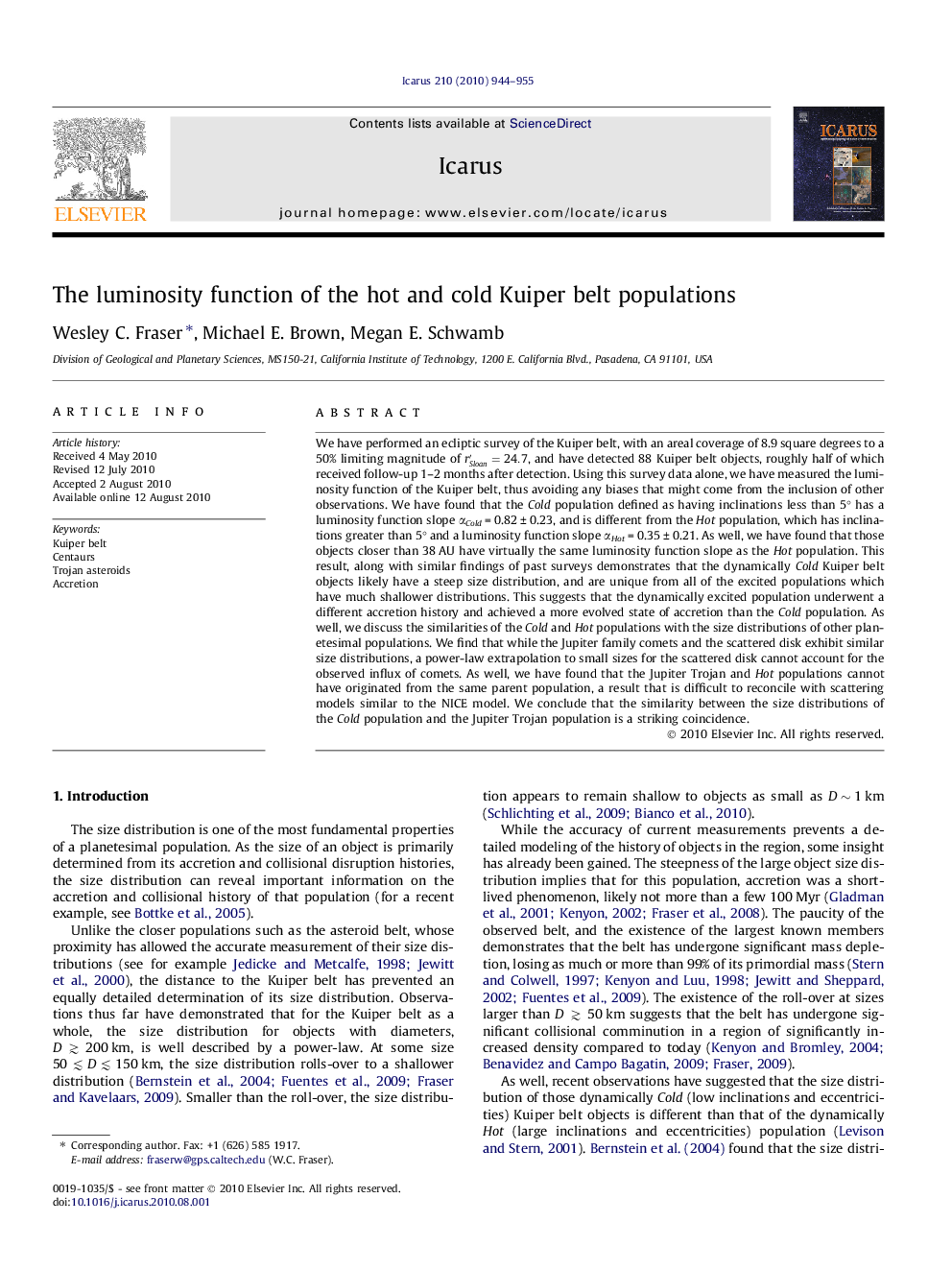| کد مقاله | کد نشریه | سال انتشار | مقاله انگلیسی | نسخه تمام متن |
|---|---|---|---|---|
| 1773637 | 1523565 | 2010 | 12 صفحه PDF | دانلود رایگان |
عنوان انگلیسی مقاله ISI
The luminosity function of the hot and cold Kuiper belt populations
دانلود مقاله + سفارش ترجمه
دانلود مقاله ISI انگلیسی
رایگان برای ایرانیان
کلمات کلیدی
موضوعات مرتبط
مهندسی و علوم پایه
علوم زمین و سیارات
علوم فضا و نجوم
پیش نمایش صفحه اول مقاله

چکیده انگلیسی
We have performed an ecliptic survey of the Kuiper belt, with an areal coverage of 8.9 square degrees to a 50% limiting magnitude of rSloanâ²=24.7, and have detected 88 Kuiper belt objects, roughly half of which received follow-up 1-2 months after detection. Using this survey data alone, we have measured the luminosity function of the Kuiper belt, thus avoiding any biases that might come from the inclusion of other observations. We have found that the Cold population defined as having inclinations less than 5° has a luminosity function slope αCold = 0.82 ± 0.23, and is different from the Hot population, which has inclinations greater than 5° and a luminosity function slope αHot = 0.35 ± 0.21. As well, we have found that those objects closer than 38 AU have virtually the same luminosity function slope as the Hot population. This result, along with similar findings of past surveys demonstrates that the dynamically Cold Kuiper belt objects likely have a steep size distribution, and are unique from all of the excited populations which have much shallower distributions. This suggests that the dynamically excited population underwent a different accretion history and achieved a more evolved state of accretion than the Cold population. As well, we discuss the similarities of the Cold and Hot populations with the size distributions of other planetesimal populations. We find that while the Jupiter family comets and the scattered disk exhibit similar size distributions, a power-law extrapolation to small sizes for the scattered disk cannot account for the observed influx of comets. As well, we have found that the Jupiter Trojan and Hot populations cannot have originated from the same parent population, a result that is difficult to reconcile with scattering models similar to the NICE model. We conclude that the similarity between the size distributions of the Cold population and the Jupiter Trojan population is a striking coincidence.
ناشر
Database: Elsevier - ScienceDirect (ساینس دایرکت)
Journal: Icarus - Volume 210, Issue 2, December 2010, Pages 944-955
Journal: Icarus - Volume 210, Issue 2, December 2010, Pages 944-955
نویسندگان
Wesley C. Fraser, Michael E. Brown, Megan E. Schwamb,